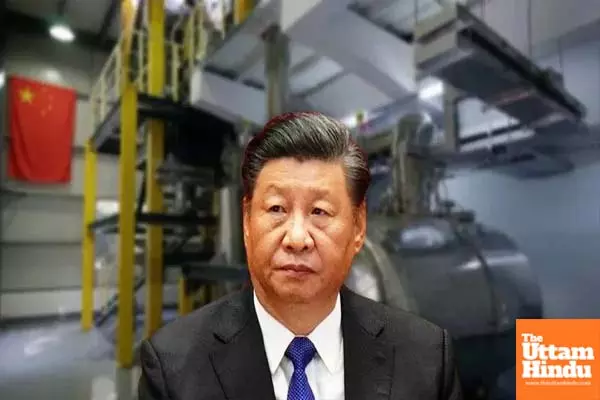
China Makes History with Salt—What They Created Will Leave You Stunned!

Beijing (The Uttam Hindu): China has achieved a historic milestone in the field of nuclear energy. The country has successfully commissioned the world's first thorium molten salt nuclear reactor. This ultramodern reactor located on the edge of the Gobi Desert has not only started producing electricity, but new fuel has also been put into it while it is running. This is being considered an important step in the field of nuclear technology.
What is Thorium Molten Salt Reactor?
This reactor is different from conventional nuclear reactors, which use uranium. Thorium is used as fuel in it, which is dissolved in molten salt. This molten salt solution acts as fuel and also keeps the reactor cool. Its biggest feature is that it can work safely even at very high temperatures, which reduces the risk of serious accidents like blast or meltdown.
Safe and abundant fuel
Thorium is considered much safer than uranium. It is available in abundance on Earth – experts believe that the huge deposits of thorium located in China's Inner Mongolia region have the potential to meet China's electricity needs for thousands of years using this technology. The nuclear waste produced from thorium is also much less and less dangerous. However, some experts also point out that this process also produces some by-products that can be used to make nuclear weapons, which can indirectly increase China's nuclear power.
Refueling a running reactor: A major achievement
Another remarkable achievement of this reactor is that it can be successfully refueled while in operation. This is similar to refueling a car while it is running. Conventional reactors have to be shut down to change fuel, but in the molten salt reactor this process can continue continuously, which increases its efficiency and flexibility in operation.
China's development based on American research
Interestingly, the concept of thorium molten salt reactor is not new. The US had researched this technology extensively in the 1960s and even built a prototype reactor, but later decided to focus on uranium-based reactors. A team led by Chinese scientist Xu Hongjie studied the research documents left behind by the US and took up the task of redeveloping this technology.
China started the construction of this reactor in 2018 and in just a few years the team of researchers reached more than 400 scientists. This prototype reactor, built on the edge of the Gobi Desert, has a capacity of 2 megawatts of thermal energy and started working at full capacity on June 17, 2024. It is also a coincidence that on this date, i.e. June 17, exactly 57 years ago, China tested its first hydrogen bomb.
This move by China is being seen as significant for the global energy scenario and the future of nuclear technology, especially at a time when the world is looking for safe, clean and sustainable energy sources.

